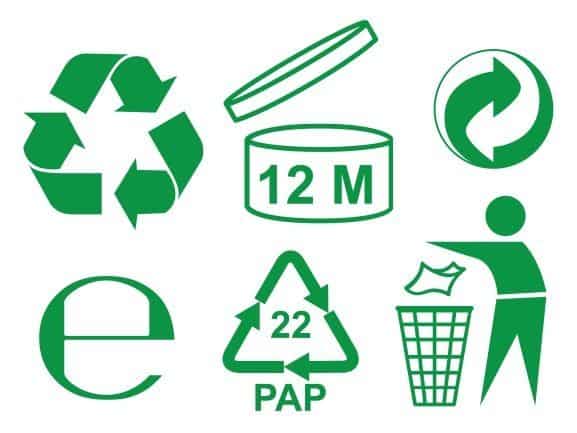Its hard to say to what extent the consumers are influencing sustainable packaging. Much of push is coming from various directives (especially from EU) and voluntary targets set by packaging coalitions. Sustainable packaging is also on the agenda of the CPGs i.e. companies that make consumer packaged goods. For the CPGs, sustainable packaging is a new business opportunity.
Plastic is used in various forms in most packaging. The anti-plastics movement across the globe is making an impact to cause a shift. Most consumers are deeply concerned about the impact of single-use plastic packaging on the environment and want non-plastic packaging options. In case the brands do use plastic packaging, then they want to make sure that the plastic used is recyclable or made with post-consumer recycled (PCR) content or bioplastics.
Research has shown that consumers support sustainable packaging for fairly sincere reasons. Consumers genuinely care, and they’re expecting more from brands.
There are however certain challenges. When it comes to food packaging, the consumers have found that most of the materials traditionally used to achieve sustainable packaging shorten the life of perishable products—thereby creating more food waste. Ironically, many recyclable packages end up in landfills due to less demand for post-consumer recycling. So, some believe that sustainable packaging is important – but to a point and will only be effective is the reverse logistics to collect used packaging is in place.
Each brand is however using different strategies towards sustainable packaging. Most companies focus on innovative design, form and presentation and some brands like Starbucks say that it will be donating its 5p charge on throwaway coffee cups to recycling schemes across the UK. This strategy is debatable.
Apparently, consumers get attracted to the graphics (e.g. nature imagery) and colour used (e.g. green) as the “love at first sight” and then those more inquisitive like to see ecolabels (especially organic) for assurance and read information environmental claims made on the label. Unfortunately, the “optics” works, and decisions made by consumers are mostly due to graphics and to a lesser extent on information and form. So, consumer education and data sharing become very important if we want the “market” to show preference to sustainable packaging. In some cases, design captures the “culture” and receive consumers acceptance. Nestlé, Japan, replaced plastic packaging on KitKat with Origami paper and with this design change, Nestle could reduce 30 tons of plastic waste per year. Consumers loved this design change.
But what about the situation when no packaging is used. Here is an interesting story on toothpaste packaging . It is estimated that 900 million boxes of toothpaste are consumed each year globally. In India alone, every year 20,460 tonnes of paper and plastic waste are generated through toothpaste consumption. The boxes used when abandoned contribute to the paper waste. But can we do away with the toothpaste box? Iceland eliminated cardboard boxes and was able to sell toothpaste without any damage to the products. The consumers in Iceland initiated the push for the elimination of toothpaste boxes in the interest of the environment and sustainability, moving gradually to 100% no-box toothpaste.
An experiment was carried out in South India to this “naked” product packaging. Most consumers claimed that they were willing to buy the naked toothpaste. The shops used quotes like “Buy Toothpaste – Not the Box,” “Only buy what you want,” and “Be Smart – Be Eco friendly” to entice the customers. Although, many consumers showed interest in these unboxed tubes of toothpaste, barely any purchases happened (only 20% sold). The barrier turned out to be questions about the quality of the unboxed product. Somehow the box was providing “assurance”.
The next strategy was to offer small price discount on the unboxed toothpaste. Indeed, there was a jump in sales and the sales increased to 40% and the entire stock was sold out by the end of the second week. The rise in sales after the discount strongly suggested that price benefit was the prime motivation and sustainability was a kind of “runner up”. Perhaps, companies planning to eliminate packaging need to have communication campaigns that address the issue of trust and assure the product quality.
It’s clear that even though sustainable packaging is important, price point is the biggest challenger by far. Even if consumers have the best intentions — price remains an issue. Tackling the issue of affordability in sustainable packaging through innovations, communication and incentives seems to be the way.
Reference Cited: Taken from http://www.businessworld.in/article/Reimagining-Packaging-By-Changing-Consumers-Behaviour/21-12-2019-180664/
Dr. Modak, Executive President, Environmental Management Centre LLP and Director, Ekonnect Knowledge Foundation, Ex- Professor at Indian Institute of Technology, Bombay is also a Member of Indian Resources Panel at MoEFCC, Member of Task Force on Sustainable Public Procurement at the Ministry of Finance. He has Drafted Report on Status on Resource Efficiency and Recommendations towards Circular Economy for NITI Aayog. Contributor to UNEP’s Green Economy report, Co-author of the Global Waste Management Outlook and Chief Editor of Asia Waste Management Outlook for the United Nations Environment.






